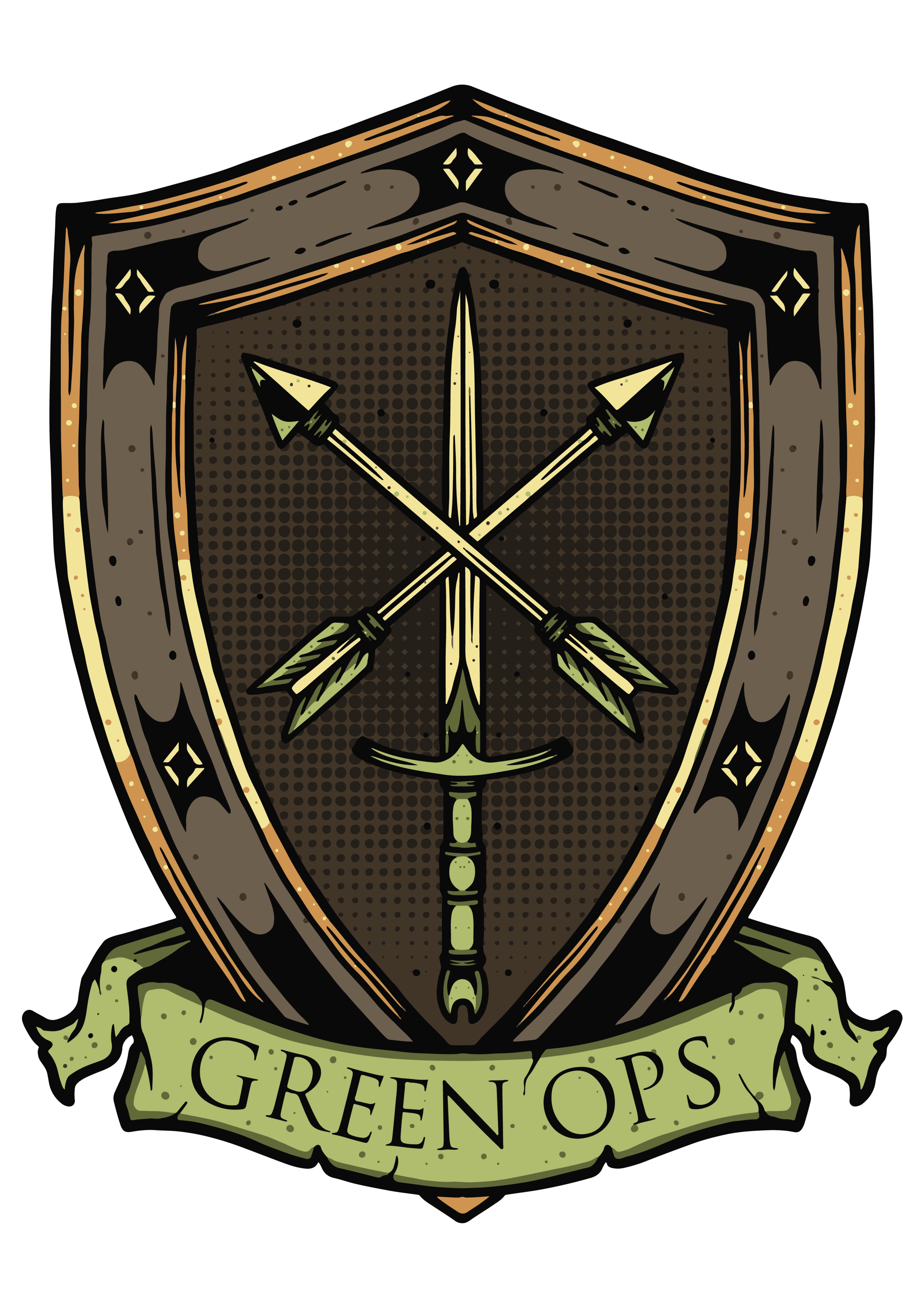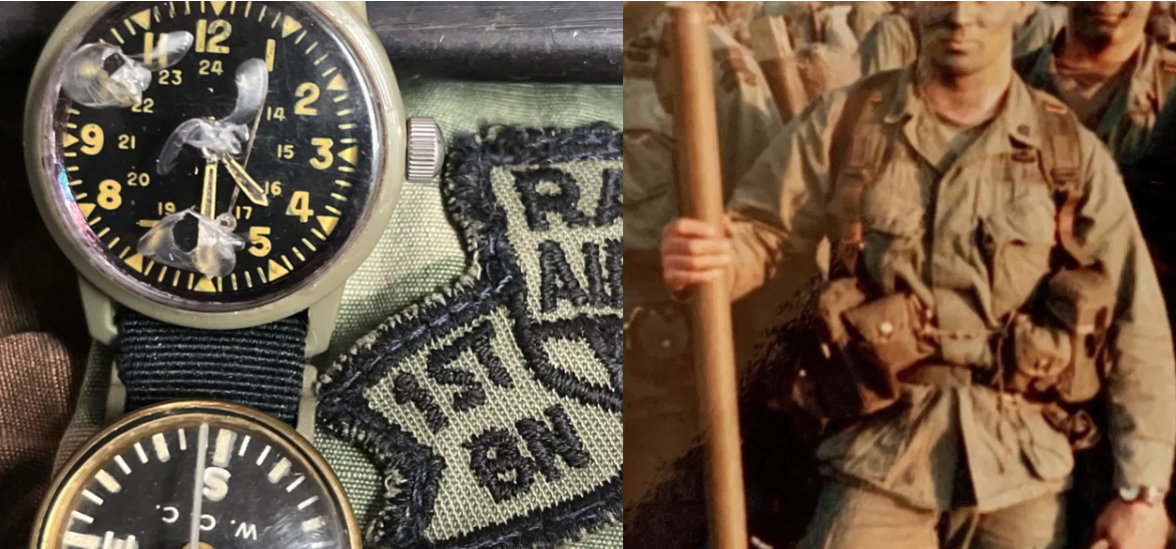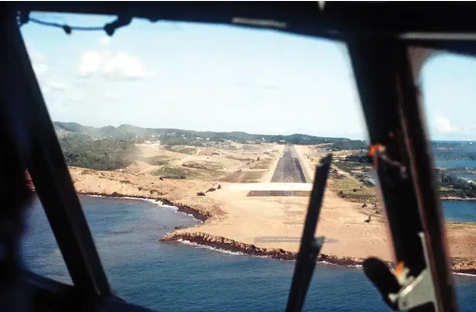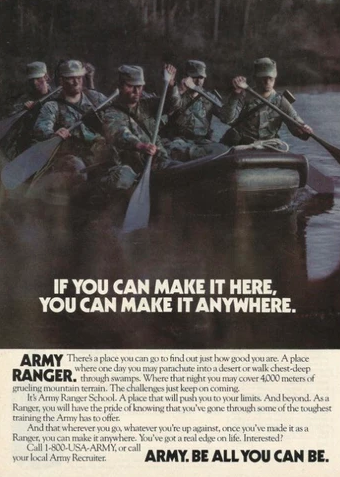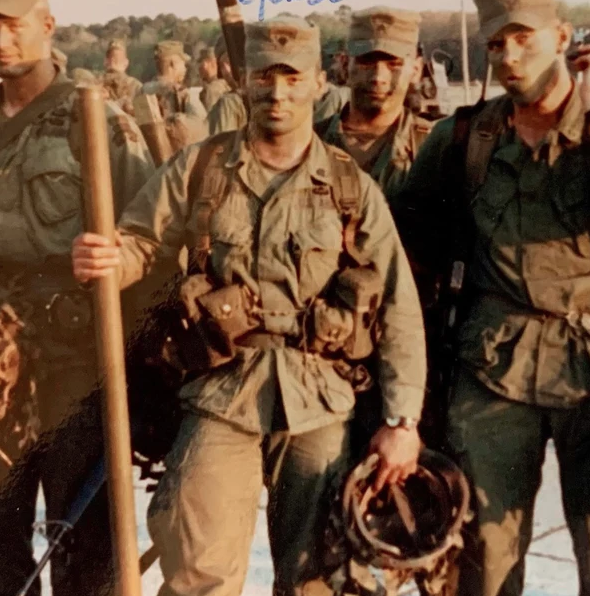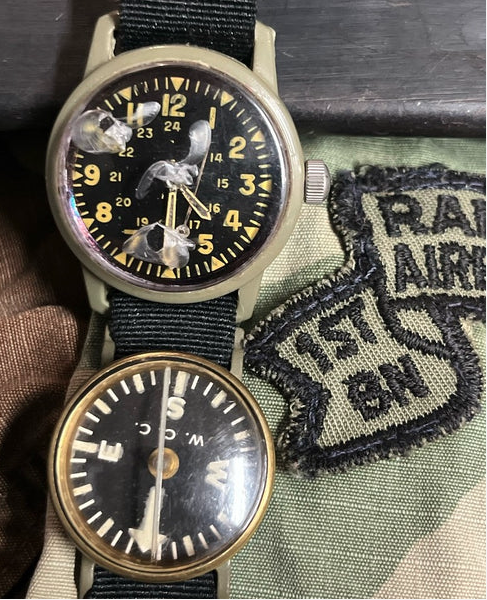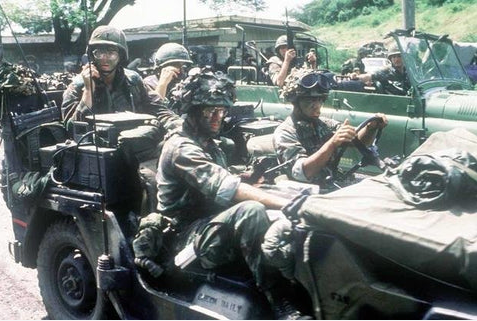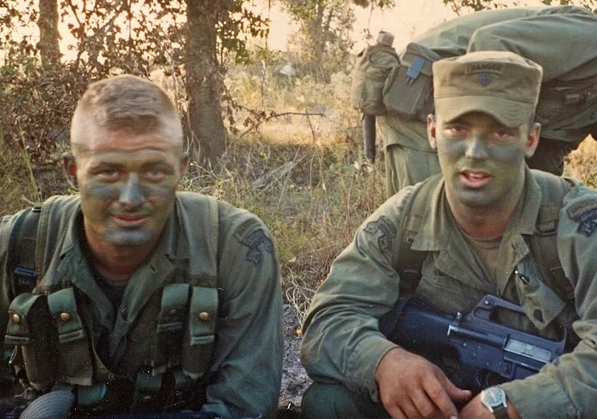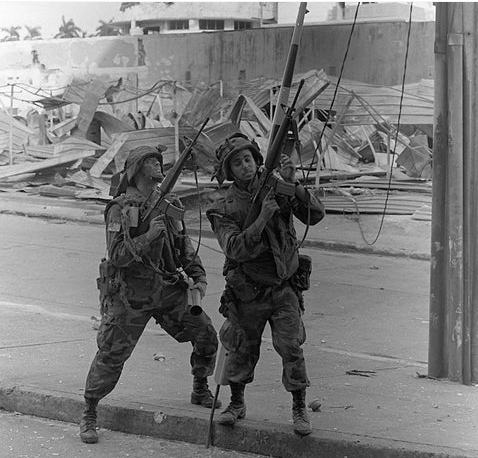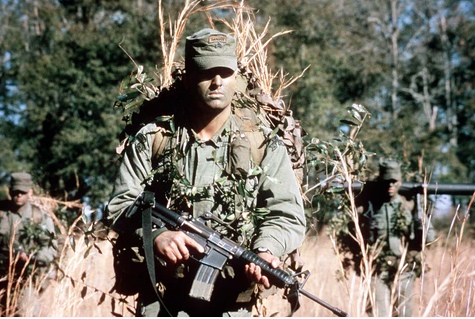A Ranger's Story Of Watches And The Evolution Of Modern Warfare
Article originally posted at www.watchesofespionage.com
From Grenada to Ground Zero With Army Ranger Jose Gordon - Part I
by Benjamin Lowry
Anti-aircraft rounds pierced the skin of the aircraft from bottom to top, their trajectory indicated by the occasional laser-like tracer. As the MC-130 Combat Talon of the Air Force’s 1st Special Operations Wing settled into its final approach, Ranger Private Jose Gordon ambled to his feet, becoming immediately aware of his 150 lbs combat loadout. At a ripe old twenty years of age, Gordon was the most junior man in rank on the entire mission. Cautiously, he moved into position in the stack of US Army Rangers from 2nd Squad, 2nd Platoon, A Company, 1 Battalion (Ranger), 75th Infantry, anxiously waiting to jump into America’s first full-scale combat operation since the Vietnam War. With a glance at his Westclox mechanical field watch, Gordon noted the 0534 zero hour and leaped into a maelstrom of fire from Soviet-built ZU-23 and M-53 quad machine guns.
Bird's eye view of the approach to the airfield at Point Salines. (Photo Credit: Department Of Defense)
It was just before dawn on October 25th, 1983. US President Ronald Reagan’s Operation Urgent Fury served as a response to a recent coup overthrowing the island nation of Grenada’s already fragile government, sparking Fidel Castro to send Cuban troops, along with a team of shadowy Soviet advisors, to secure the tiny Caribbean country for his own interests. The immediate need to evacuate over 600 US citizens, the majority of whom were medical students enrolled at St. George’s University School of Medicine, enacted one of the most complex US Special Operations missions in history. Elements of the US Navy SEALs, US Air Force Special Tactics, as well as the US Army’s Delta Force, Task Force 160 (known today as the 160th Special Operations Aviation Regiment or “The Night Stalkers”), and the 75th Ranger Regiment were set to deploy a carefully-orchestrated plan to secure American Citizens on Grenadian soil post-haste.
Photo Credit: US Army
Gordon had been in the Army for around six months prior to his precarious jump into Grenada, with thirteen weeks in One Station Unit Training (OSUT), the Army’s combined boot camp and advanced infantry training program, quickly followed by another three weeks at the Basic Airborne Course and a further four weeks in the Ranger Indoctrination Course (RIP), both prerequisites for joining the Ranger Battalions. Growing up in Virginia, Gordon was an exceptional athlete, earning a scholarship to play baseball at the University of Miami. Along with sports, watches were also a fascination from a young age. Gordon’s father, a diplomat of Argentine descent, wore a gold Rolex Oysterdate and bought his son his first mechanical watch during a visit to Buenos Aires when he was only fourteen. While he doesn’t remember the specific model, receiving a “real” watch at such a young age sparked an interest that would follow Gordon throughout his life.
US Army Rangers recruiting poster from the 1980s. Who wouldn't want to get in on that?
With two years of college and Division I athletics under his belt, Gordon ultimately decided a traditional university education would not be his path, eventually making his way to the Army Recruiter’s office with the dream of becoming a helicopter pilot. The recruiter, being a recruiter, eyed the young man’s athletic background and changed the trajectory of young Jose’s life with a simple statement: “We have this thing called Rangers.”
Gordon’s 1st Battalion (Ranger) 75th Infantry, which would later become the 75th Ranger Regiment, was charged with parachuting onto and securing the Point Salines airfield at Grenada’s southern tip to clear a path for the 82nd Airborne, set to arrive en masse later that morning in a massive column of C-141 Starlifter troop transports. When I interviewed Jose Gordon, who has an astonishing memory for detail, the aspect of his first combat jump he most vividly remembered was simply hoping to make it to the ground without getting killed or injured. Jose touched down unscathed, but his trusty Westclox watch wasn’t so fortunate, suffering a shattered crystal somewhere along the way but admirably still running, a feat the watch impressively manages to this day.
Gordon's plastic Westclox was damaged on his jump into Grenada but continues to more or less keep time to this day.
As quickly as the first Rangers of 1st Battalion landed and began to organize themselves, the immediate gravity of armed conflict became apparent. A Ranger on the runway was shot through the neck, immediately paralyzing him from the neck down. Shortly thereafter, Jose’s 2nd Squad machine gunner, a man named Mark Yamane, was shot in the face, quickly dying before Gordon’s young eyes as the battle for the airfield raged. Of the nineteen Americans killed in the conflict, five were Rangers from Gordon’s Platoon and Company who died in the offensive's opening hours.
An example of a four-man Jeep team in Grenada. Source: US Army
After securing the airfield and successfully evacuating the American medical students from the nearby campus, codenamed “True Blue”, Gordon’s squad was sent to locate a missing team of Rangers and their Jeep. Pushing approximately 1200 meters beyond the hastily established perimeter of the airfield, a careful search of the dense jungle located the Jeep alongside four dead Rangers and evidence of an intense firefight. Gordon’s team was soon embroiled in its own series of successive jungle gunfights against poorly organized but motivated Cuban and Grenadian People's Revolutionary Army (PRA) troops. The shit was hitting the fan. After capturing two enemy combatants, Gordon’s Platoon Leader leader, a man named First Lieutenant (1LT) Sydney Farrar, ordered the squad to return to the airfield to regroup.
When Gordon’s squad reached the relative safety of the airfield, they were immediately sent back into the bush to secure and recover the remains of the fallen Jeep team soldiers. After a quick firefight with three Soviet-built BTR-60 armored personnel carriers headed for the airfield, Jose’s squad called it in via radio and elected to break contact, crafting a plan to clear a path to the Jeep team where they intended to establish and defend a perimeter around their fallen Ranger brothers. Shortly thereafter, the remains of the BTR-60s and its PRA escorts had been shot to hell at the airfield and caught Gordon’s squad by surprise with a fierce ambush. With enemy fighters at an intimate distance, First Lieutenant Farrar stepped out onto an open road just as Gordon’s peripheral vision caught a violent burst of small arms fire that sent Gordon to the deck with branches severing above his head.
U.S. military personnel, armed with M16A1 rifles, observe a C-141 Starlifter aircraft upon its arrival to evacuate American students during Operation URGENT FURY. Photo Credit: US National Archives
Squinting through dense vegetation and gunfire, Gordon saw that Farrar was hit, slumped over, and exposed on the dirt road. While only 15-20 feet from Gordon’s position, the intense barrage of small arms fire made reaching his platoon leader impossible. Just before, Gordon eyed a stopped Soviet armored personnel carrier towing a ZPU anti-aircraft gun down the road with a Caucasian soldier that he assumed was a Soviet advisor alongside. Today, Gordon remembers what happened next as feeling like slow motion. The exposed Soviet and the young private from Virginia, unseen among the vegetation, raised their rifles and fired at precisely the same time. Farrar was hit again and fell in the path just as Gordon’s rounds found their mark at dead center mass on the Soviet advisor, who Gordon remembers was wearing the blue-and-white striped undershirt favored by the elite Soviet Spetsnaz of the era.
Soviet troops in Afghanistan wearing the blue and white striped undershirt known as a telnyashka, worn by the elite Spetsnaz and other Soviet units of the era.
Jose did not need years of experience to know that Farrar, who was later found to have been shot once through the upper arm, shattering his humerus, and twice in the chest, was in a bad way and would die without medical intervention. Amid the chaos, an enemy assailant maneuvered onto the road in an apparent attempt to capture Gordon’s fallen platoon leader. As he drew a bead on the fighter, Gordon heard the thump of a friendly 203 grenade launcher behind and above and today vividly remembers the ensuing explosion that left nothing of the enemy combatant save for a single smoking boot.
After a harrowing two-and-a-half hours, Gordon’s squad managed to recover Farrar who was quickly medevacked to a higher level of care, eventually and miraculously making a full recovery. Safely back at the airfield after a hard day at the office, Gordon peered at his watch, squinting to make out the 0100 hour through the broken crystal. While shaken and exhausted from the rigors of his first full day of combat operations, Gordon felt truly alive, aware in that moment that war would be his life’s trade.
The legendary Seiko 6309-7040 was utilized by so many commandos during the 70s and 80s. Source: Wind Vintage
The following year, in 1984, it was Jose’s turn to earn the coveted Ranger Tab. After two weeks of Pre-Ranger training at 1st Ranger Battalion, Gordon was well prepared to attend and survive 58 days of US Army Ranger School, graduating with Ranger Class 9-84 and earning the right to wear the Ranger Tab. At the PX at Fort Benning, Gordon purchased a Seiko 6309 for around $40 in part as a celebratory reward for earning his place among the US military’s elite.
A Tudor Snowflake Submariner similar to those Jose remembers admiring in his unit's squad box. Photo Credit: TudorSub.com
Intriguingly, when Gordon arrived back at his unit, he noticed each “squad box”, a small caché of essential tools, maps, and gear, had been updated to include a pair of Tudor Submariners, one for the team leader, typically a junior officer, and another for the senior enlisted member of the squad. While happy with his newly-acquired Seiko, the perfect 1980s commando watch, Jose couldn’t help but covet the Swiss-made diver with its trademark “Snowflake” dial format. At least in timekeeping terms, leadership had its benefits. As a note, this is the first direct evidence of a US Army SOF-issued Tudor Submariner we have come across at WOE. We are, of course, big fans of Tudors of Espionage (T.O.E.s) around here, and we’ll continue to dig into the history.
Young Jose operating in South America with an issued Hamilton or Benrus field watch on the wrist.
Thanks in part to his fluency in Spanish, a product of his half-Argentinean upbringing, Gordon was selected to deploy to Honduras in 1984 where he worked as a translator on MEDCAP or Medical Civic Action Programs with the Contras. Backed by the US Government, the Contras were a loose conglomerate of right-wing rebel groups combating communism across the border in Nicaragua with no small amount of assistance coming from US Army Special Forces. The consistent rotation of 45 to 60-day tours in the Central American jungle was ideal on-the-job training for Gordon’s development as an enlisted leader, cementing ideals that would bring him to within a few hundred meters of capturing infamous dictator Manual Noriega in Panama a few years later. It was also around this time that the mysterious Tudor Submariners disappeared from Ranger supply channels, replaced by steel-cased field watches from Hamilton and Benrus that Jose also used alongside his trusty Seiko.
Two soldiers from the 4th Bn., 6th Infantry, 5th Infantry Div. (Mech.), search for a sniper hidden in a building near the destroyed Panamanian Defense Force headquarters during the second day of Operation Just Cause. Photo Credit: US National Archive
After yet another combat jump under fire into Panama on the 19th of December, 1989, Gordon participated in another series of airfield seizures, with three geographically-separated airfields taken in minutes by the Ranger Regiment thanks to its trademark combination of precision planning and surgical execution. Rather than deja vu taking him back to his first taste of war in Grenada, Gordon, now a Staff Sergeant and among the enlisted leadership, felt at ease, comforted by years of training, numerous combat deployments, and the confidence that comes with being surrounded by highly trained professional warriors. This time, both Gordon and his Seiko 6309 survived the combat jump in good working order.
US Army Rangers training in the early 1980s. Photo Credit: Department Of Defense
At this point, it’s important to state that the role of the US Army Rangers in modern combat is often misunderstood and overshadowed by more celebrated units, including the much-lauded Navy SEAL Teams and US Army Special Forces or “Green Berets”. However, when it comes to US Special Operations in combat, the Rangers have always been right there. Organizationally, the Rangers serve as one of three national mission units within JSOC or Joint Special Operations Command, including SEAL Team 6 (today known as the Naval Special Warfare Development Group or DEVGRU) and Delta Force, affectionately known in Jose’s world as “The Unit”. Where the latter two units specialize in counter-terrorism and precision assaults utilizing smaller teams, the Rangers are for virtually everything else. In fact, the Rangers are the only unit to have served in every US conflict since their modern-day re-activation in 1974/75, often doing the hard yards at the uncelebrated fringes of modern warfare to pave the way for SEALs and Delta Force operators on their way to the headlines.
This is Part One of Jose Gordon’s incredible story of service, watches, and war. Part Two will cover Jose’s role at Ground Zero on 9/11, his extensive government service with the Asymmetric Warfare Group, and of course, more watches. You won’t want to miss it.
About The Author: Benjamin Lowry is a US Coast Guard veteran and commercial diver turned watch writer. These days, Ben splits his time between writing and video production in the watch industry and managing @SubmersibleWrist, a watch spotting account dedicated to military and commercial divers.
